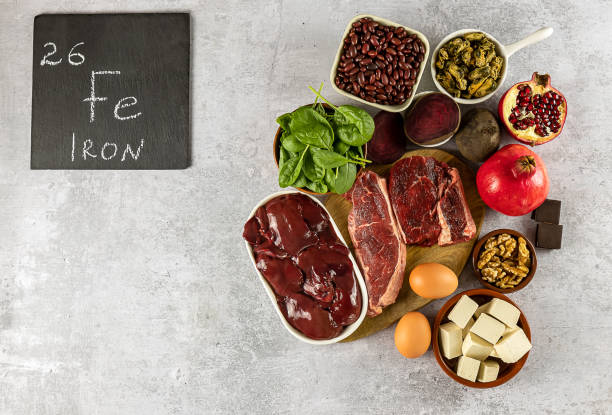Have you ever felt disappointed after preparing what seemed like a healthy meal, only to wonder if your cooking methods might be sabotaging its benefits? It’s a common concern—balancing flavor and nutrition can be challenging when you learn that cooking affects the nutrient content of your favorite ingredients. This post dives deep into how various cooking techniques influence vitamins, minerals, and antioxidants, offering actionable tips to ensure you get the most out of every bite.
The Science Behind Nutrient Changes
Cooking involves heat, moisture, and sometimes chemical reactions, all of which can transform the food you eat. When we say that cooking affects the nutrient content of foods, it’s important to understand that not all changes are negative. In fact, some cooking processes actually enhance nutrient availability, making it easier for your body to absorb essential vitamins and minerals. For example, the breakdown of cell walls in vegetables can increase the bioavailability of compounds like beta-carotene.
However, certain nutrients are more sensitive to heat, light, and oxygen. Water-soluble vitamins, such as vitamin C and several B vitamins, can be lost during prolonged cooking or when foods are boiled. On the other hand, minerals and fat-soluble vitamins often remain more stable, although they can sometimes be affected by high temperatures or improper storage.
How Cooking Affects the Nutrient
Different cooking methods have varying impacts on the nutritional profile of your food. Let’s explore some common techniques:
Boiling and Steaming
- Boiling: While boiling is a simple method, it can cause water-soluble nutrients to leach into the cooking water. If you’re preparing nutrient-dense vegetables, consider using the cooking liquid in soups or sauces to recapture lost vitamins.
- Steaming: Steaming is a gentler alternative that minimizes nutrient loss. By exposing food to steam rather than submerging it in water, you preserve more of the delicate vitamins and antioxidants. This method is particularly effective for green vegetables.

When it comes to boiling or steaming, remember that how cooking affects the nutrient content largely depends on the duration and temperature used. Shorter cooking times at lower temperatures tend to preserve more nutrients.
Frying and Sautéing
Frying and sautéing involve higher temperatures and the addition of fats, which can both enhance and diminish nutrient content. For instance:
- Frying: Deep frying can lead to significant nutrient loss, especially for heat-sensitive vitamins. Additionally, the formation of unhealthy compounds through oxidation is a concern if oils are reused or heated excessively.
- Sautéing: This method uses less oil and shorter cooking times, making it a better choice for preserving nutrients while still adding flavor.

It’s crucial to choose the right type of fat when frying or sautéing. Oils with high smoke points, like avocado oil, are less likely to break down and form harmful compounds. Ultimately, how cooking affects the nutrient profile when frying or sautéing depends on both the temperature and the type of oil used.
Baking and Roasting
Baking and roasting are dry-heat methods that can actually enhance certain flavors and nutrients by concentrating them. For example, roasting vegetables can increase the levels of some antioxidants, making them more potent than when eaten raw. However, extended exposure to high temperatures may lead to the degradation of some vitamins.

To maximize benefits:
- Use moderate temperatures.
- Avoid overcooking.
- Consider covering foods with foil to reduce direct heat exposure.
Grilling and Broiling
Grilling and broiling add a unique flavor to foods and can be quite healthy if done properly. Yet, these methods can also result in nutrient loss, particularly when meat is charred or overcooked. When grilling, it’s important to monitor cooking times and flip foods frequently to avoid burning. Marinating foods beforehand can help reduce the formation of harmful compounds while preserving essential nutrients.

Strategies to Preserve Nutrient Integrity
Understanding that cooking affects the nutrient content of foods is the first step toward making healthier choices in the kitchen. Here are some strategies to help you retain as many nutrients as possible:
- Use Minimal Water: When boiling, use just enough water to cover the food and consider reusing the liquid in other dishes.
- Opt for Steaming: Steaming is one of the best methods for preserving vitamins and minerals.
- Control Cooking Time and Temperature: Lower temperatures and shorter cooking times generally result in less nutrient degradation.
- Cover Your Pots: Keeping the lid on can reduce nutrient loss by trapping steam and heat.
- Avoid Overcooking: Overcooking not only alters taste and texture but can also significantly reduce nutrient levels.
- Incorporate Raw Foods: Balance your diet with raw fruits and vegetables to ensure you’re getting a full spectrum of nutrients.
Real-World Applications and Practical Insights
How can you apply these insights in your everyday cooking? Let’s consider a few real-world scenarios:
Imagine you’re preparing a vegetable medley for dinner. If you boil the vegetables, a significant amount of vitamin C might dissolve into the water. Instead, try lightly steaming them or even sautéing with a bit of olive oil. Not only does this method enhance flavor, but it also preserves those precious nutrients.
Another example is preparing grains like quinoa or brown rice. While boiling can cause some loss of water-soluble B vitamins, using a method where you absorb the water completely (such as the pilaf method) can help retain these nutrients. Additionally, rinsing grains before cooking can remove any surface residues without stripping away nutrients.
When it comes to proteins, consider grilling fish or chicken at moderate temperatures rather than frying them. This approach reduces the formation of harmful compounds and retains more of the natural vitamins and minerals inherent in the meat.
Here are a few bullet-point tips to help guide your cooking practices:
- Experiment with steaming: It’s a great way to lock in flavor and nutrients.
- Choose cooking methods wisely: Combine different techniques to create meals that are both delicious and nutrient-rich.
- Be mindful of cooking times: Quick, high-heat methods can sometimes be beneficial, but longer cooking might be necessary for tougher cuts of meat or fibrous vegetables.
- Utilize marinades: They not only add flavor but can also provide a protective barrier against nutrient loss.
- Incorporate raw dishes: Balance cooked meals with raw salads or lightly prepared dishes to maximize your nutrient intake.
How Cooking Affects the Nutrient: A Balancing Act
The discussion about how cooking affects the nutrient content of foods isn’t just about choosing one cooking method over another—it’s about balance. Every cooking technique offers its own set of advantages and challenges. For example, while boiling might diminish some vitamins, it can also soften fibers and make certain minerals more accessible. Conversely, grilling may enhance flavor and texture but requires careful monitoring to avoid nutrient loss.
Ultimately, understanding that cooking affects the nutrient balance in your food empowers you to make choices that align with your health goals. It’s not necessary to avoid cooking altogether; rather, you can adjust your methods to maximize benefits and minimize losses.
Integrating Nutrient Preservation into Your Lifestyle
Adopting these cooking strategies can lead to a more mindful and health-conscious approach to food preparation. Here are some final actionable steps to integrate into your daily routine:
- Plan Your Meals: Design your menu around nutrient-rich foods and decide on cooking methods in advance.
- Mix It Up: Don’t rely on a single cooking technique—experiment with different methods to see which best preserves the flavors and nutrients of your ingredients.
- Educate Yourself: Stay updated with the latest research on nutrient retention and cooking practices. Small changes can lead to significant health benefits over time.
- Listen to Your Body: Notice how you feel after eating meals prepared in different ways. Your body can often signal what works best for you.
In your journey to better health, every small change counts. Learning that cooking affects the nutrient content of your foods can be the catalyst for a deeper exploration of your dietary habits and overall wellness.
Before you set out on your next culinary adventure, consider revisiting Seed Oils: Are They Actually Toxic? for additional insights on how different ingredients and cooking methods can influence your health. Later in your day, if you’re curious about further strategies for self-care and personal growth, check out more resources at venzec.icu.
Cooking is both an art and a science. While it’s true that cooking affects the nutrient content of foods, the key lies in being informed and intentional about your methods. By choosing techniques that preserve essential vitamins and minerals, you can enjoy meals that are both flavorful and nourishing. Embrace experimentation in the kitchen, learn from each meal you prepare, and continue to refine your approach to achieve the best possible balance of taste and nutrition.
In the end, understanding how cooking affects the nutrient dynamics in your food is more than just a scientific inquiry—it’s a journey toward a healthier, more mindful way of living. Each time you step into your kitchen, you have the opportunity to make choices that support your long-term well-being. So go ahead, experiment with new techniques, and savor the process of crafting meals that fuel both body and soul.









